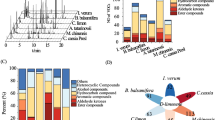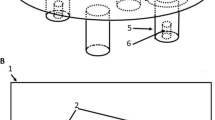Abstract
To understand whether flavor enhancers pose potential risks to the environment, it is important to assess its effects on insects. Therefore, the objective of this study was to evaluate the toxicity of flavor enhancers on the survival and behaviors of the red imported fire ant, Solenopsis invicta. In this study, we found that the mortality of S. invicta workers that were fed glutamic acid monosodium salt hydrate, glycine, L-alanine, succinic acid, succinic acid disodium, inosinate 5′-monophosphate disodium salt hydrate, and GMP were significantly higher than the mortality rates of workers fed sucrose. Moreover, glycine and GMP exhibited the strongest toxicities and caused 100% mortality in workers after 84 h. LC50 values were 0.004 g/ml and 0.02 g/ml for GMP and glycine, respectively. Additionally, at sublethal doses, both GMP and glycine solutions decreased foraging and digging behaviors. Our results suggest that flavor enhancers are toxic to insects and also likely to have a negative impact at sublethal concentrations.




Similar content being viewed by others
References
Baker TC, Van Vorhis Key SE, Gaston LK (1985) Bait-preference tests for the Argentine ant (Hymenoptera: Formicidae). J Econ Entomol 78:1083–1088
Baudier KM, Kaschock-Marenda SD, Patel N, Diangelus KL, O’Donnell S, Marenda DR (2014) Erythritol, a non-nutritive sugar alcohol sweetener and the main component of truvia (R), is a palatable ingested insecticide. PLoS One 9:e98949
Benelli G (2015) Research in mosquito control: current challenges for a brighter future. Parasitol Res 114:2801–2805
Benelli G (2018) Plant-borne compounds and nanoparticles: challenges for medicine, parasitology and entomology. Environ Sci Pollut Res 25:10149–11015
Boukouvala MC, Kavallieratos NG, Athanassiou CG, Hadjiarapoglou LP (2016) Biological activity of two new pyrrole derivatives against stored-product species: influence of temperature and relative humidity. Bull Entomol Res 106:446–456
Boukouvala MC, Kavallieratos NG, Athanassiou CG, Losic D, Hadjiarapoglou LP, Elemes Y (2017) Laboratory evaluation of five novel pyrrole derivatives as grain protectants against Tribolium confusum and Ephestia kuehniella larvae. J Pestic Sci 90:569–585
Carocho M, Barreiro MF, Morales P, Ferreira IC (2014) Adding molecules to food, pros and cons: a review on synthetic and natural food additives. Compr Rev Food Sci Food Saf 13:377–399
Chen J, Allen M (2006) Significance of digging behavior to mortality of red imported fire ant workers, Solenopsis invicta, in fipronil-treated sand. J Econ Entomol 99:476–482
Chen J, Cantrell C, Duke S, Allen M (2008) Repellency of callicarpenal and intermedeol against workers of imported fire ants (Hymenoptera: Formicidae). J Econ Entomol 101:265–271
Chen J, Rashid T, Feng G (2012) Toxicity of formic acid to red imported fire ants, Solenopsis invicta Buren. Pest Manag Sci 68:1393–1399
Chen J, Rashid T, Feng GL, Zhao LM, Oi D, Drees BM (2013) Defensive chemicals of tawny crazy ants, Nylanderia fulva (Hymenoptera: Formicidae) and their toxicity to red imported fire ants, Solenopsis invicta (Hymenoptera: Formicidae). Toxicon 76:160–166
FAO/WHO (2012) Codex principles and guidelines on foods derived from biotechnology. Joint FAO/WHO Food Standards Programme, Rome
Hahn RG, Sandfeldt L, Nyman CR (1998) Double-blind randomized study of symptoms associated with absorption of glycine 1.5% or mannitol 3% during transurethral resection of the prostate. J Urol 160:397–401
Holway DA, Lach L, Suarez AV, Tsutsui ND, Case TJ (2002) The causes and consequences of ant invasions. Annu Rev Ecol Syst 33:181–233
Molz S, Dal-Cim T, Tasca CI (2009) Guanosine-5′-monophosphate induces cell death in rat hippocampal slices via ionotropic glutamate receptors activation and glutamate uptake inhibition. Neurochem Int 55:703–709
Nguyen AT, Kang J, Kim WS (2013) Influence of salt additives on phase transformation of guanosine 5-monophosphate disodium in anti-solvent crystallization. J Cryst Growth 373:82–87
O’Donnell S, Baudier K, Marenda DR (2016) Non-nutritive polyol sweeteners differ in insecticidal activity when ingested by adult Drosophila melanogaster (Diptera: Drosophilidae). J Insect Sci 16(47):1–3
Pan F, Lu Y, Wang L (2017) Toxicity and sublethal effects of sulfoxaflor on the red imported fire ant, Solenopsis invicta. Ecotoxicol Environ Saf 139:377–383
Pavela R, Benelli G (2016) Essential oils as ecofriendly biopesticides? Challenges and constraints. Trends Plant Sci 21:1000–1007
Porter SD, Savignano DA (1990) Invasion of polygyne fire ants decimates native ants and disrupts arthropod community. Ecology 71:2095–2106
Reid BL, Klotz JH (1992) Oral toxicity of Abamectin, Dechlorane, and Sulfluramid to free-foraging workers of Camponotus pennsylvanicus (Hymenoptera: Formicidae). J Econ Entomol 85:1822–1829
Renwick A (1993) Data-derived safety factors for the evaluation of food additives and environmental contaminants. Food Addit Contam 10:275–305
Rowles AD, O’Dowd DJ (2007) Interference competition by Argentine ants displaces native ants: implications for biotic resistance to invasion. Biol Invasions 9:73–85
Rust MK, Reierson DA, Paine E, Blum LJ (2000) Seasonal activity and bait preferences of the Argentine ant (Hymenoptera: Formicidae). J Agric Urban Entomol 17:201–212
Silverman J, Roulston TH (2001) Acceptance and intake of gel and liquid sucrose compositions by the Argentine ant (Hymenoptera: Formicidae). J Econ Entomol 94:511–515
Stringer C, Lofgren C, Bartlett F (1964) Imported fire ant toxic bait studies: evaluation of toxicants. J Econ Entomol 57:941–945
Türkoğlu Ş (2015) Evaluation of genotoxic effects of five flavour enhancers (glutamates) on the root meristem cells of Allium cepa. Toxicol Ind Health 31:792–801
Vinson SB (1997) Invasion of the red imported fire ant (Hymenoptera: Formicidae): spread, biology, and impact. Am Entomol 43:23–39
Vogt JT, Shelton TG, Merchant ME, Russell SA, Tanley MJ, Appel AG (2002) Efficacy of three citrus oil formulations against Solenopsis invicta Buren (Hymenoptera : Formicidae), the red imported fire ant. J Agric Urban Entomol 19:159–171
Wang L, Chen J (2015) Fatty amines from little black ants, Monomorium minimum, and their biological activities against red imported fire ants, Solenopsis invicta. J Chem Ecol 41:708–715
Wang L, Zeng L, Chen J (2015) Sublethal effect of imidacloprid on Solenopsis invicta (Hymenoptera: Formicidae) feeding, digging, and foraging behavior. Environ Entomol 44:1544–1552
Wei G, Zhen C, Feng Y (2011) Study on toxicity transfer of several pesticides against Coptotermes formosanus. Guangxi Plant Protect 2:8–12
Weldon PJ, Cardoza YJ, Vander Meer RK, Hoffmann WC, Daly JW, Spande TF (2013) Contact toxicities of anuran skin alkaloids against the fire ant (Solenopsis invicta). Naturwissenschaften 100:185–192
Wong R, Piper MD, Wertheim B, Partridge L (2009) Quantification of food intake in Drosophila. PLoS One 4:e6063
Zhang X, Chen S, Li Z, Xu Y (2017) Effect of sweeteners on the survival of Solenopsis invicta (Hymenoptera: Formicidae). J Econ Entomol 110:593–597
Zheng C, Zeng L, Xu Y (2016) Effect of sweeteners on the survival and behaviour of Bactrocera dorsalis (Hendel) (Diptera: Tephritidae). Pest Manag Sci 72:990–996
Acknowledgements
We thank Jian Chen at USDA-ARS for their constructive comments regarding this manuscript. We thank EGP Fox at South China Agricultural University for his help with language editing.
Funding
This study was supported by Guangdong Key Laboratory of Animal Conservation and Resource Utilization (GIABR-KF201702) and the National Key Research and Development Project (2016YFC201200). The funders had no role in the study design, data collection and analysis, decision to publish, or preparation of the manuscript
Author information
Authors and Affiliations
Corresponding authors
Ethics declarations
Competing financial interests
The authors declare that they have no competing interests.
Additional information
Responsible editor: Giovanni Benelli
Electronic supplementary material
ESM 1
(DOCX 407 kb)
Rights and permissions
About this article
Cite this article
Huang, Y., Chen, S., Li, Z. et al. Effects of flavor enhancers on the survival and behavior of the red imported fire ant, Solenopsis invicta (Hymenoptera: Formicidae). Environ Sci Pollut Res 25, 21879–21886 (2018). https://doi.org/10.1007/s11356-018-2276-8
Received:
Accepted:
Published:
Issue Date:
DOI: https://doi.org/10.1007/s11356-018-2276-8




